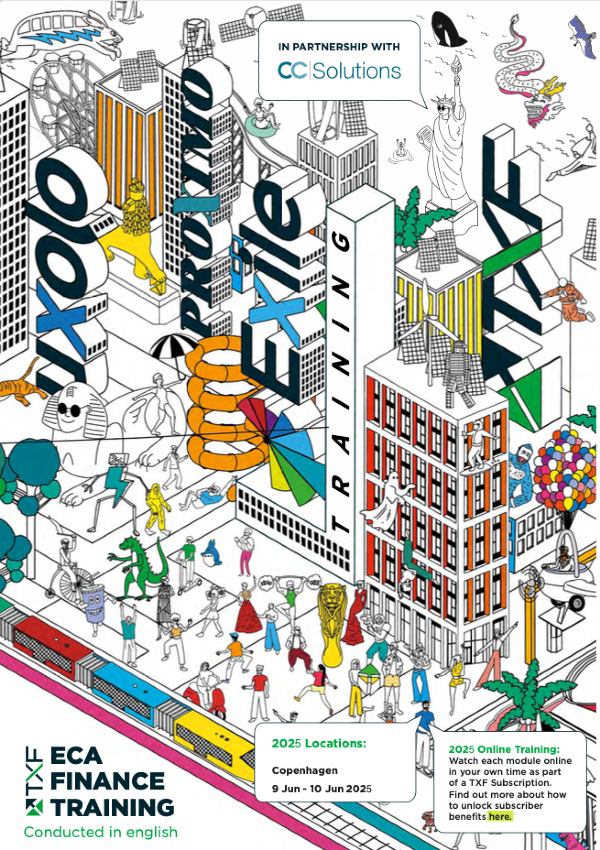Digitising trade credit insurance
Ben Heaney, CEO of credit insurance e-trading platform Dialogue, shines the spotlight on the progress of digitally transforming the insurance side of the credit insurance and political risk market – which has traditionally been seen as old fashioned and paper based.


The credit insurance market has seen some impressive improvements over the past 15 years. B2C, SME markets have been transformed by API-led solutions, through online marketplaces and portals. On the more long term, structured side, the product itself has evolved, with maximum periods for non-cancellable limits reaching 25 years! This is great progress showing the innovation and progress from a market which just a few decades ago only had a handful of insurers.
Regarding digital portals, over the last 15 years in the credit and political risk insurance (CPRI) market, there have been a number of broker specific, and underwriter specific digital portals, all of which attempt to bring some element of efficiency to some or all of the single obligor subset of the CPRI industry.
Various insurance brokers and underwriters have worked over the years on in-house projects but have failed to get deep market support. Reluctance to change, technology failings have contributed, but mainly the perceived lack of independence has prevented a platform from gaining real traction across the market.
Now we are at a turning point. For the large insureds of the market, the topic of digitalisation has never been more in focus. Brokers are now starting to require clear answers to the tender documents as to what type of digital solution will be used to generate efficiencies and data analytics. “What framework are your APIs written in” did not figure in tender documents as little as five years ago.
In search of independent solutions
Sophisticated insureds, generally those that purchase large amounts of credit insurance, are sometimes wary of a single broker strategy that potentially renders them locked into using one broker’s solution, restricting their freedom to place business through other service providers.
But on the other hand, the insureds that choose a multi-broker distribution strategy can be frustrated as each broker may use different systems requiring different API specifications, data fields, standards, quality and timeliness, all of which can result in inefficiency and deficient levels of insight into the insured’s interaction with the insurance market.
Underwriter consolidation
A familiar concept in the traditional Lloyd’s of London insurance market is the idea of a 'lead' underwriter retaining the right to make most of the decisions in a syndicated insurance contract. Recently this paradigm has shifted to increase the proportion of underwriters acting with similar rights as the ‘leader.’ One has to ask at what point the tenth underwriter on the contract is really adding anything to the transaction (apart from their balance sheet).
It’s no surprise that follow-only initiatives have caught the headlines in the last few months, with the proliferation of tech platforms offering what the market calls algorithmic underwriting. There remains a data question – while the recent pushes around the core data record are good steps in the right direction, this record on its own will not allow every risk to be underwritten. Some additional level of finer details is still required.
A paradigm shift
Recent years have seen a concerted, market-wide effort to address these issues in the single risk credit insurance market. This is being fuelled by new data standards for classes of business that are helping to improve deal flow through the market by removing the friction associated with transferring data between systems, and increasing automation and interoperability.
The launch of the Single Risk Credit Insurance Data Standard in 2021 was a major leap forward for the market – the result of extensive ongoing collaboration between major market practitioners, focussed almost exclusively on credit insurance terms.
Designed to provide data integrity, accuracy and consistency across the market and creating a digital foundation for automatic underwriting and increased deal flow, the standard is open to all brokers, insurers and insureds to use.
It was initially developed by credit insurers – Chaucer Syndicates; Euler Hermes; Liberty Specialty Markets; Sompo International; Talbot Underwriting; and Tokio Marine HCC – in collaboration with specialist brokers Miller Insurance Services; Cofarco; Aon UK and Aon France, who worked together to develop the data standard, with Dialogue leading the initiative and bringing the parties together.
Lloyd’s also supported the development of the standard, which harnesses data from S&P Global Market Intelligence. The standard covers structured credit transactions across an extensive number of deal types. Of course, as new structures are innovated by Brokers and Underwriters, these get added to the standard.
The pace of change is increasing
The credit and political risk insurance market is complex by its very nature, but by reducing non-standardised data and process inefficiencies in many areas we can increase the amount of trade between all brokers and insurers and increase the size of the market.
Work is now underway to collaborate on further enhancement to data standards, improving the new independent e-placement processes in the market, and also to offer innovative capacity incentives to transact business digitally.
The focus of all this effort is to reduce the frictional cost of negotiating and placing credit insurance, and drive brokers and underwriters alike towards low-cost, high quality, underwriting. Increasing the accessibility of the credit insurance market through digital transformation is also key to growing the overall size of the market.





